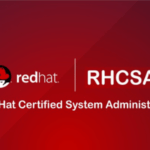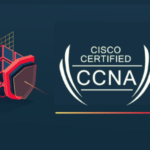What is Network Scanning: How Does It Work?

What is Network Scanning: How Does It Work?
Network scanning is essential for assuring the security and effectiveness of computer networks in the broad digital environment. It enables businesses to find weaknesses, spot illicit entry, and strengthen their security measures against possible risks. But what is network scanning in reality, and how does it operate? In this thorough introduction, we’ll delve into the particulars of network scanning and examine its goals, working methods, and tools. So buckle up as we set off on an educational tour through the world of network scanning.
What is Network Scanning?
Let’s first grasp the fundamentals of network scanning before moving on to the specifics. Network scanning can be defined as the process of looking through a network architecture to find active hosts, open ports, and other crucial data. It entails investigating the network to learn important details about its configuration, security flaws, and potential points of entry for attackers. Businesses may maintain a strong security posture and guarantee the authenticity of their electronic possessions by using network scanning.
Why is Network Scanning Important?
The practice of network scanning is extremely important in the field of cybersecurity. Enterprises can find security flaws and fix them before malevolent adversaries take advantage of them by continuously scanning networks. Network scanning is important for a number of reasons, including:
| Vulnerability Assessment | Companies can analyze network infrastructure threats like obsolete software or incorrectly set up hardware by using network scanning. They can take prompt action to remedy these gaps and avert prospective intrusions by detecting them. |
| Intrusion Detection | By observing network activity and spotting abnormal activity, network scanning assists in the detection of unwanted access efforts and prospective invasions. It serves as a watchful guardian, carefully monitoring network activity. |
| Regulatory Compliance | Network scanning is required on a regular basis by strict standards that apply to many different sectors. Not only does following these rules help you avoid fines, but it also shows that you care about protecting sensitive data. |
How Does Network Scanning Work?
Now that we are aware of the importance of network scanning let’s examine how it operates. To learn more about the network, network scanning uses a range of methods and technologies. Let’s look at some fundamental approaches:
- Ping Sweeping
A simple but effective technique for finding active hosts on a network is ping sweeping. This technique comprises pinging a variety of IP addresses with ICMP echo requests and evaluating the results. In addition, the host is said to be active if a response is received. Ping sweeping lays the groundwork for later scanning methods.
- 2. Port Scanning
In order to find open ports on network devices, port scanning is a vital phase in network scanning. Security experts can evaluate the possible risks presented by these open entry points by analyzing open ports. Common methods for port scanning include:
TCP Connect Scan: To find out if a given port is open, this technique creates an entire TCP connection with the intended host. Although it is trustworthy, intrusion detection systems (IDS) can quickly identify it.
SYN Stealth Scan: This approach, also referred to as a half-open scan, transmits SYN packets to the intended host without concluding the TCP handshake. By skipping the entire connection creation, it offers a more covert method of port scanning.
UDP Scan: As opposed to TCP, which sends acknowledgment packets, this technique targets UDP ports. The scanner can find open UDP ports by broadcasting UDP packets through different ports.
- Vulnerability Scanning
The goal of vulnerability scanning is to locate flaws in software, operating systems, and network hardware. This includes comparing the network’s features with a sizable database of acknowledged vulnerabilities. Businesses can quickly identify and fix vulnerabilities thanks to the automation provided by vulnerability scanning technologies.
- Banner Grabbing
Banner grabbing is the process of obtaining data from network services that are openly accessible. It enables network scanners to collect specifics regarding the operating system, software version, and other important information. Corporations can find potential vulnerabilities linked to particular services or versions by examining banner ads.
- Network Mapping
The goal of network mapping is to produce a visual depiction of the architecture and interconnected components of the network. Creating a complete picture of the network infrastructure, it requires an understanding of hosts, routers, switches, and their connections. Recognizing the arrangement of the network, spotting possible bottlenecks, and optimizing network management procedures are all made easier by network mapping.
Tools Used in Network Scanning
Network scanning is a complex task that relies on various tools to accomplish its objectives. Here are some commonly used tools:
| Nmap (Network Mapper) | Nmap is an open-source network scanning and security auditing tool that is robust and flexible. It enables a variety of scanning methods, such as port scanning, version detection, and ping sweeping. Security experts use Nmap because of its flexibility and wide range of features. |
| OpenVAS | A thorough vulnerability scanning tool that aids in locating security flaws in networks and applications is called OpenVAS (Open Vulnerability Assessment System). This highlighted tool offers powerful scanning features and a sizable database of known security flaws. |
| Wireshark | Network administrators can record and examine network data using the popular network protocol analyzer Wireshark. This aids in the detection of anomalies, the investigation of network problems, and the identification of potential security risks. |
| Nessus | Nessus is a potent vulnerability scanning tool available for purchase that offers comprehensive network inspection and evaluation features. It gives users extensive reports, a huge database of security shortcomings, and compatibility with other security solutions. |
| Metasploit | A penetration testing framework called Metasploit has a number of network scanning modules. It enables security experts to mimic actual attacks and evaluate the efficacy of network defenses. |
FAQs
About Network Scanning
1: What is the purpose of network scanning?
Network scanning is done to learn more about a computer network, its components, and how they are configured. The methodical examination of a network to find open ports, accessible services, and possible weaknesses is known as network scanning.
2: Is network scanning legal?
In accordance with the conditions and the motivation underlying the inspection actions, network scanning may be legal or illegal. It’s critical to distinguish between authorized users scanning networks legitimately for legitimate reasons and malevolent users scanning networks with the aim of harming or acquiring unauthorized access.
3: How often should network scanning be performed?
The extent and intricacy of the network structure, the desired level of security, and the company’s tolerance for risk all affect how frequently networks are scanned. In addition, there is no one size fits all solution, but the following are some basic recommendations for network scanning frequency:
- Regular scans,
- After significant changes,
- Patch management cycles,
- Prior to critical events,
- On-demand or in response to incidents, etc.
4: What are the risks of not performing network scanning?
The potential risks of not performing network scanning are mentioned below:
- Undetected vulnerabilities,
- Increased attack surface,
- Delayed incident detection,
- Compliance violations,
- Operational disruptions,
- Data breaches and information loss,
- Limited visibility and control, etc.
5: How can network scanning help with compliance requirements?
In order to ensure a safe and legal network environment, network scanning is essential for enterprises to find and remediate security vulnerabilities, such as the following:
- Vulnerability assessment,
- Patch management,
- Configuration management,
- Unauthorized access detection,
- Intrusion detection,
- Auditing and reporting, etc.
Conclusion
To sum up, we have implemented every methodology to drive information regarding the best networking security practices. In this regard, a person can join the best–in–class network security course by Craw Security, the best networking institute in India, which offers world-class training information through highly skilled and well-trained mentors with 12+ years of quality experience and understanding all about network scanning.














